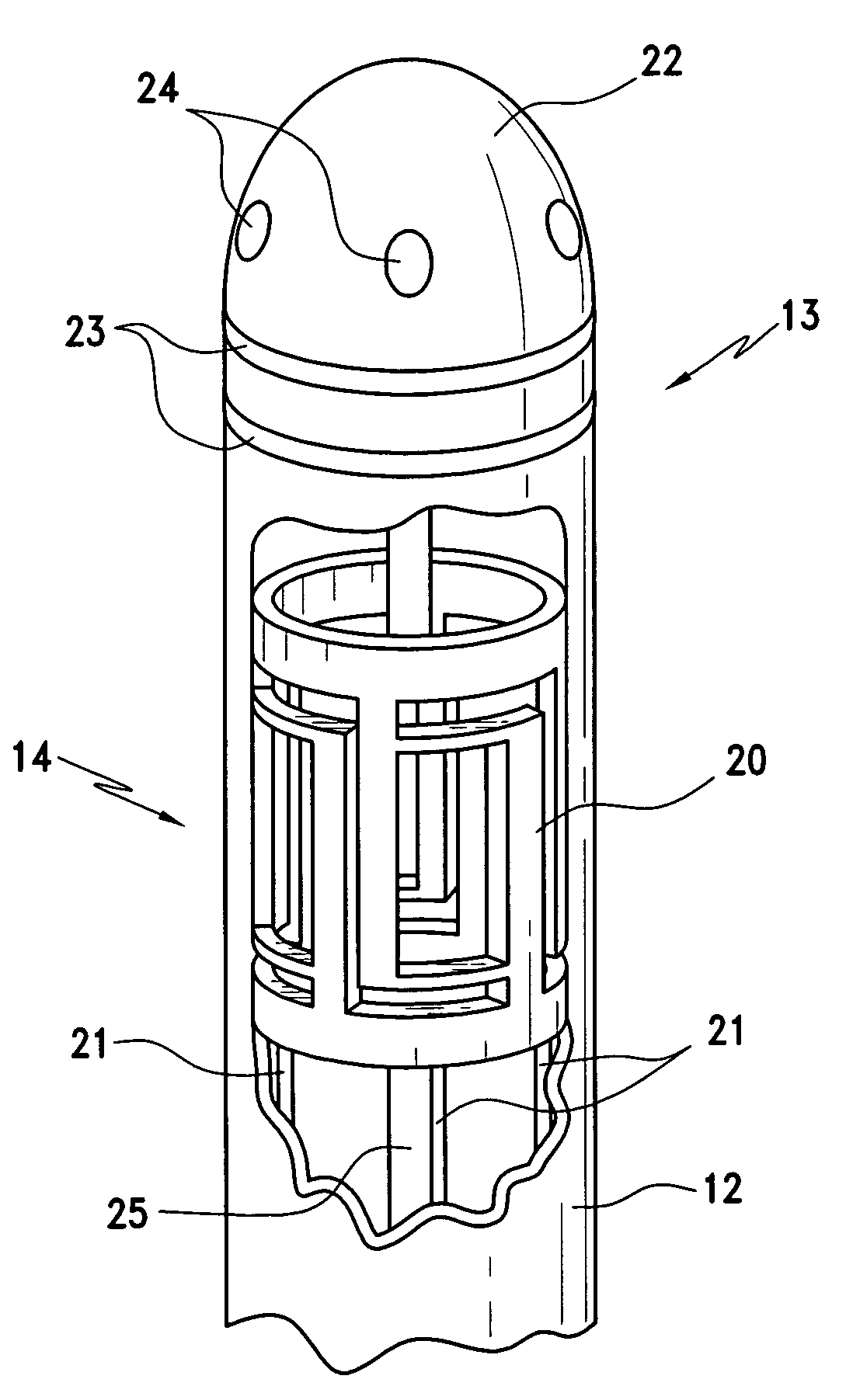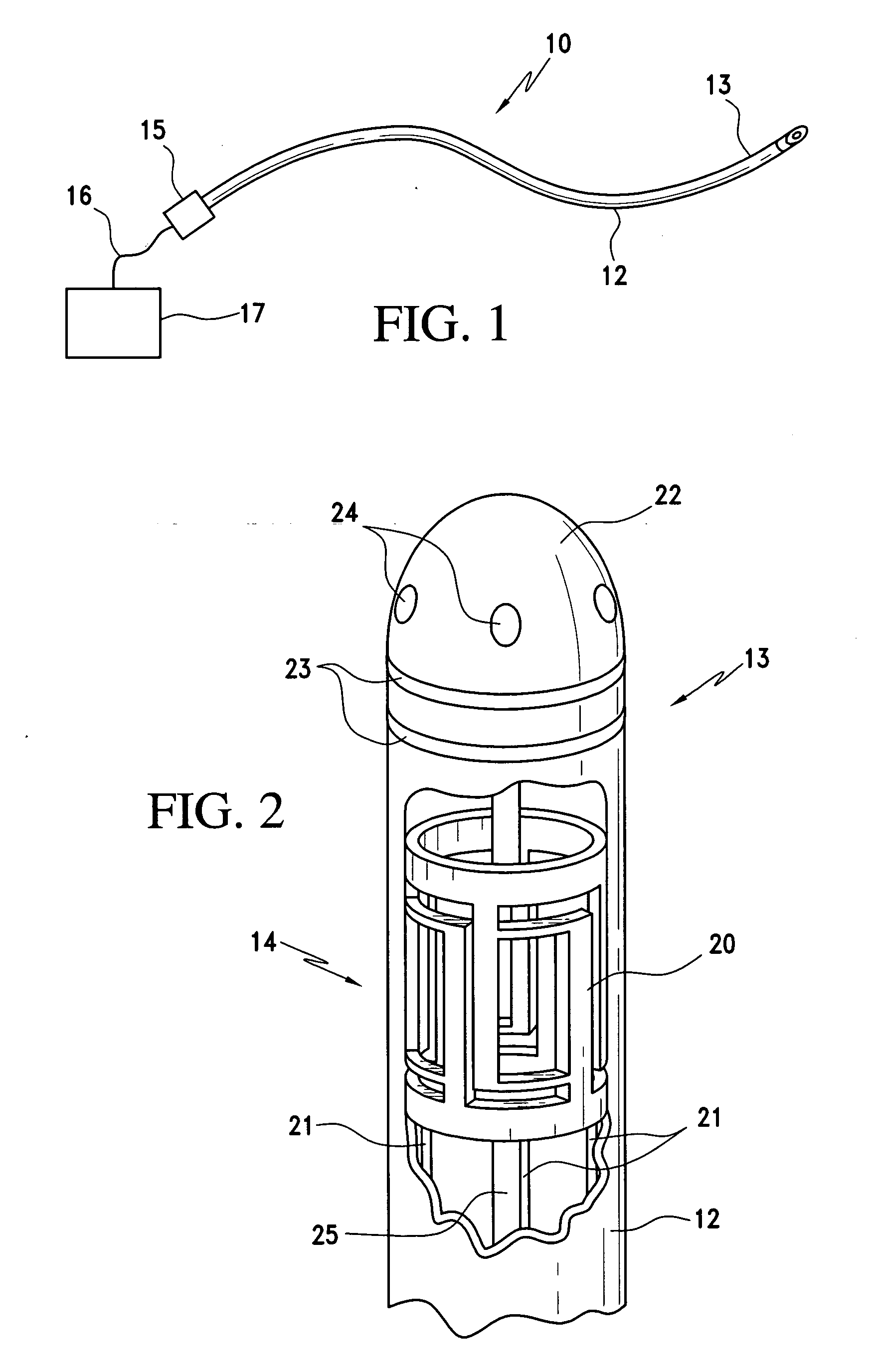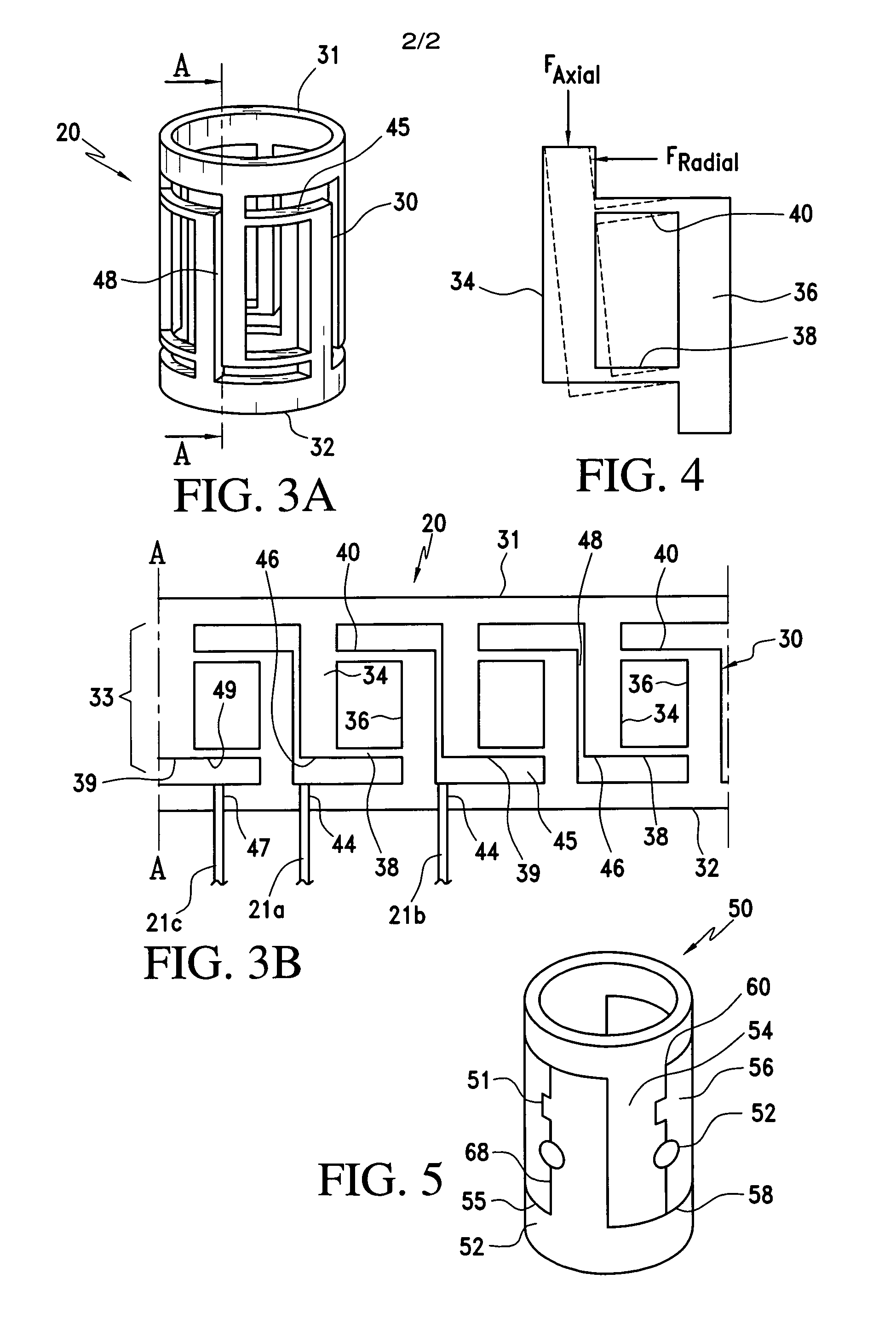Catheter having tri-axial force sensor
a tri-axial force sensor and catheter technology, applied in the field of catheters, can solve the problems of difficult positioning, complicated mapping procedure, and manual feedback from the catheter and/or impedance measurement,
- Summary
- Abstract
- Description
- Claims
- Application Information
AI Technical Summary
Benefits of technology
Problems solved by technology
Method used
Image
Examples
Embodiment Construction
[0035]The present invention is directed to a catheter for the diagnosis and treatment of a bodily vessel or organ, in situations where it is desired to detect and measure contact forces between a distal extremity of the catheter and a wall of the organ or vessel. The force sensing capability of the catheter may be used intermittently to measure the contact forces at discrete points, or alternatively, used to continuously monitor contact forces to assist in the manipulation and operation of the device.
[0036]In a preferred embodiment, the catheter of the present invention may be manually operated by a clinician and employs a visual or audio cue generated by the output of the tri-axial force sensor so to determine, e.g., an optimum position for measuring an electro-physiologic value or for performing a treatment. Advantageously, a catheter equipped with the force sensing system of the present invention is expected to permit faster, more accurate diagnosis or treatment of a vessel or or...
PUM
 Login to View More
Login to View More Abstract
Description
Claims
Application Information
 Login to View More
Login to View More - R&D
- Intellectual Property
- Life Sciences
- Materials
- Tech Scout
- Unparalleled Data Quality
- Higher Quality Content
- 60% Fewer Hallucinations
Browse by: Latest US Patents, China's latest patents, Technical Efficacy Thesaurus, Application Domain, Technology Topic, Popular Technical Reports.
© 2025 PatSnap. All rights reserved.Legal|Privacy policy|Modern Slavery Act Transparency Statement|Sitemap|About US| Contact US: help@patsnap.com



